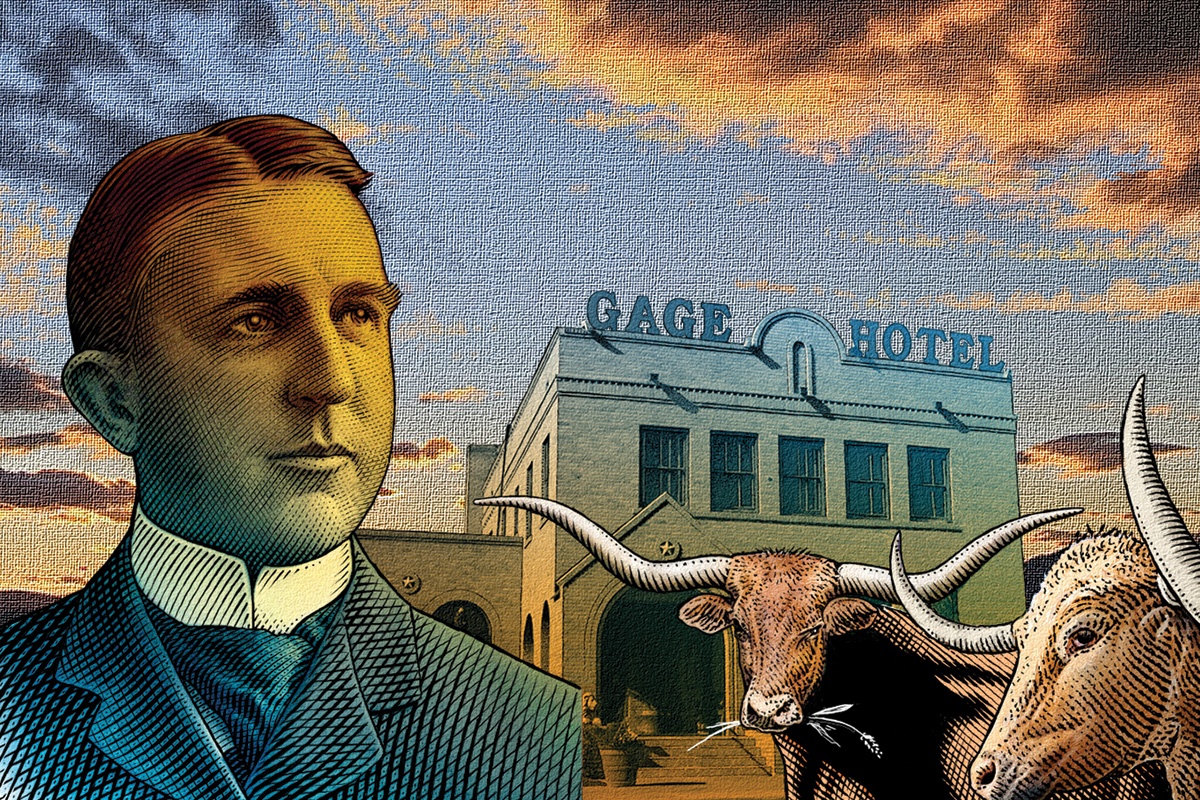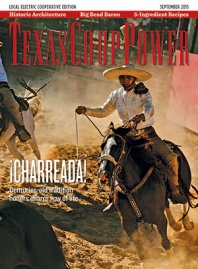When 18-year-old Alfred Stevens Gage arrived in Texas in 1878 from Ascutneyville, Vermont, his first job as a ranch hand in Shackelford County paid $12 a month. Gage had journeyed to Texas with encouragement from his half-brother Edward, who was established in Dallas with a land acquisition business.
Gage saved enough money from his ranch work to purchase a cattle operation in Archer County. This venture proved short-lived, as rustlers absconded with his stock. Despite the setback, Gage’s initial foray into ranching was the first in a series of business moves that would culminate in his owning thousands of cattle and more than 500,000 acres spread across the Big Bend country.
After selling his land interests in Archer County, Gage agreed to take over Edward’s operation along the Big Bend frontier. He arrived in the railroad community of Marathon in 1882. Edward’s operation, called the Presidio Live Stock Company, had just acquired 2,000 head of cattle and an established brand, the Running W Bar. Edward pastured the livestock along Maravillas Creek, a 90-mile intermittent stream flowing from the Del Norte Mountains southwest of Marathon to the Rio Grande. Today, the mouth of Maravillas Creek is a favorite take-out point for canoe and raft trips through the Rio Grande’s Temple Canyon.
Gage no doubt developed some of his business acumen while working with Ed-ward, an aggressive negotiator. After ending his Dallas-based partnership, Edward recruited investors from the northeast to infuse the Presidio Live Stock Company with funds. He then negotiated deals for the company, including the purchase of 68,000 acres of his own land along with 700 head of his Maravillas cattle and the attendant Running W Bar brand. Additional purchases increased the company’s holdings to more than 10,000 head of cattle, just in time for the onset of a drought and a severe winter.
The rough conditions proved financially calamitous for the Presidio Live Stock Company, dropping the value of each head of livestock from $30 down to $5 over four years. Edward continued to suffer financially, and his troubles caused personal despair. He took his own life in 1892.
In the shadow of Edward’s untimely death, investors reorganized the company, and a new charter was created: the Alpine Cattle Company, of which Gage became secretary and superintendent. Gage in-creased the company holdings to more than 100,000 acres. He also enriched his personal stake, purchasing rangeland and stocking it with cattle. By 1910, his personal holdings exceeded those of the company he supervised. His financial in- genuity (and rising cattle prices) helped him secure a controlling interest in the Alpine Cattle Company, and by 1917, he owned its entire stock outright. He also retired the Running W Bar brand, replacing it with his own, known as Lightning, a simple design composed of two parallel and slanted lines that is still in use today.
Gage moved to San Antonio. He tended his Big Bend interests, traveling to Marathon often enough to warrant building his own hotel. The Gage Hotel, completed in 1927, was designed by El Paso architect Henry Trost. The hotel, a mix of mission and Spanish colonial design, was typical for Trost, and similar to hotels he designed in Marfa (El Paisano), Alpine (the Holland) and Van Horn (El Capitan).
Gage died from complications after an appendectomy a year after the hotel opened, but the business survived. Purchased and restored by another Texas businessman, J.P. Bryan, the Gage Hotel is a destination of choice for travelers visiting Big Bend.
The Gage ranchlands survive as well, under the A.S. Gage Partnership Ltd.
Much of the original land holdings, almost 200,000 acres in Brewster and Presidio counties, are still owned by the family. The remaining rangeland has been slow to change since Gage first arrived here, giving visitors to Big Bend a sense of the natural environment of the 19th century.
——————–
Photographer, author and artist E. Dan Klepper lives in Marathon.


